

Damion Smy
Hyundai i30 N TCR celebrates 10 years of ‘N’ with Gran Turismo 7 debut
12 Hours Ago
The PHEV version of BMW’s 5 Series limousine balances luxury with frugality, making it a compelling alternative to six-cylinder petrol power.
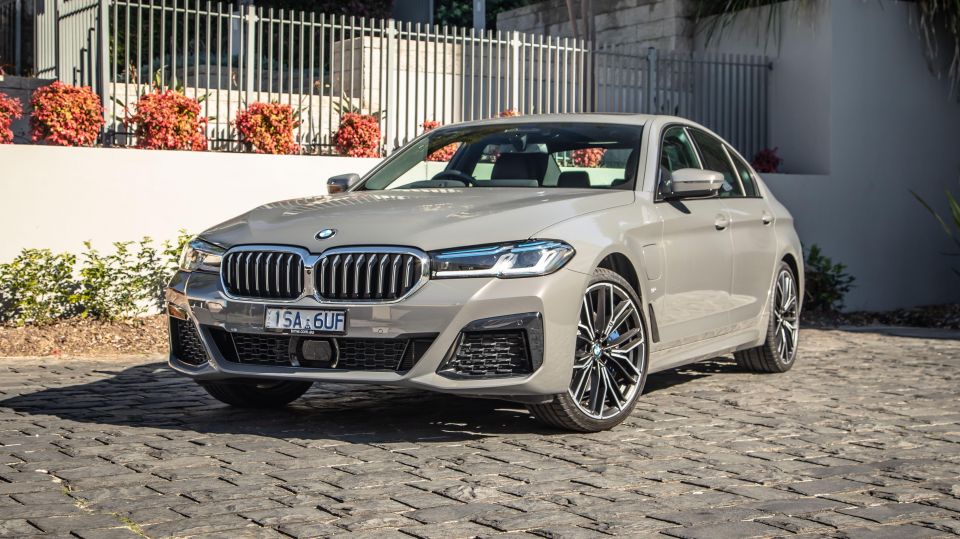


Journalist
New from
$122,900
excl. on-roads

Journalist
New from
$122,900
excl. on-roads


Journalist
New from
$122,900
excl. on-roads

Journalist
New from
$122,900
excl. on-roads
Quickly see how this car stacks up against its competition. Select any benchmark to see more details.
Where expert car reviews meet expert car buying – CarExpert gives you trusted advice, personalised service and real savings on your next new car.
While a large luxury German limousine mightn’t need proper six-cylinder petrol power, age-old convention suggests that it surely deserves it. Not for eco-friendliness, but for unflustered dignity and suitable premiumness.
But times change, if not completely so (as of yet). The latest 2021 BMW 530e sedan is the Munich-based marque’s plug-in hybrid petrol-electric spin on long-running and well-regarded nameplate, which slots into the current 5 Series line-up next to similarly badged stablemates offering a broad array of four and six-cylinder petrol and diesel power units, as well as lusty twin-turbo V8 petrol engines at the top of the range.
In short, the 530e needs to prove itself: as a viable leaner and cleaner alternative to the 530i petrol asking for similar money; as a viable electric-driven prospect with enough real-world EV-only range with proper daily driven benefit; as a touring machine with levels of comfort and luxuriousness that might rival six-cylinder alternatives from competing makers, given the absence of the six-pot 540i from the current Aussie line-up.

And after a week of daily driving the dual-powered newcomer, it’s easy to be convinced that BMW has not created a viable new spin on the old favourite model line, there are plenty of reasons why you should opt for hybrid over the safe 530i four-pot alternative. In fact, there’s enough limousine-like dignity in its polish and execution comparable to what buyers might expect, but can’t current access, in a ‘proper’ six-pot BMW.
Essentially, that’s exactly what the 530e needs to do: provide a seat-of-the-pants experience not all that unlike a petrol 5 Series, if with enough benefits to swoon you into a format that requires – or perhaps more deserves – to be plugged in and recharged on a regular basis. Otherwise, really, why bother when you, frankly, you don’t need to go to the trouble (again, as of yet).
Plug-in hybridisation is considered by some, for fairly logical reasons, as bridging technology to a fully electric future. But given the future, erm, hasn’t arrived yet, is a PHEV 5 Series worthy of serious consideration in the present?
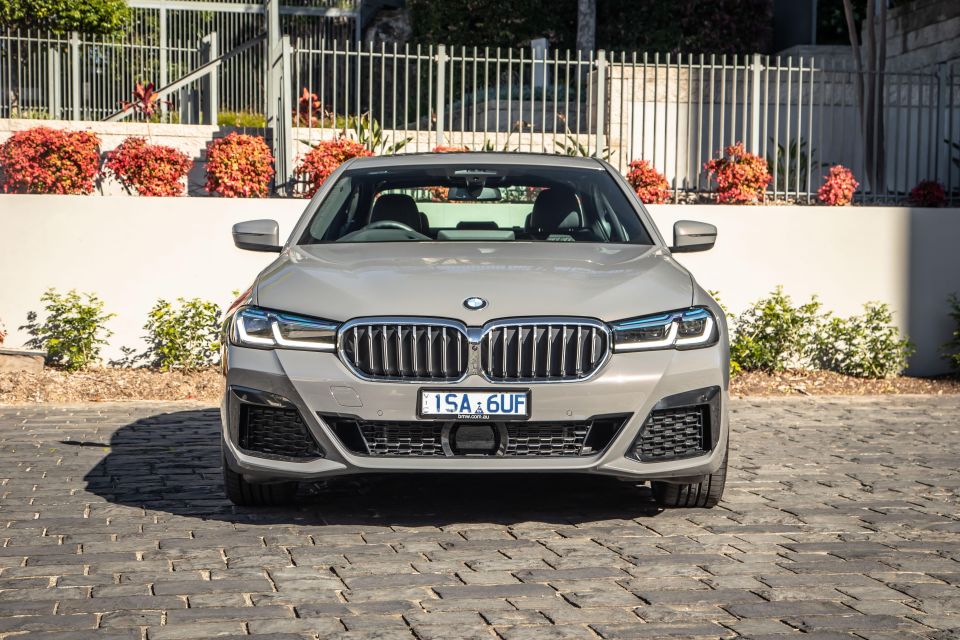
The 2021 BMW 530e clocks in at $122,900 before on-road costs. Price wise, that slots the PHEV version neatly between the four-cylinder petrol 530i ($119,900 list) sat three grand below it and the six-cylinder diesel 530d ($125,900 list) sat three grand above.
Only a slight lease payment adjustment apart, then, and ostensibly three viable cross-shops.
The Bimmer’s key rival is the Mercedes-Benz E300e, offering a similar format with the Stuttgart marque’s trident on the grille for $123,500 list, a mostly academic $600 premium.

Audi does do an A6 55 TFSI S line quattro at $116,000 list, but this turbo V6-powered offering is what’s marketed as a mild-hybrid, offering none of the real-world benefits of why you’d opt for a proper PHEV to begin with: decent electric-only driving range. Similarly, the Tesla Model S kicks off at $134,700 list for what’s a fully electric, and therefore considerably different, proposition.
Our test car fits a number of cost options that lifts its as-tested outlay to $131,900 before on-roads. The big-ticket item is the Enhance Package that, at $5900, adds metallic paintwork – pearlescent grey in our subject’s case – as well as 20-inch M light alloy wheels, an electric sunroof and BMW’s ‘Laserlight’ headlight technology.
The cabin benefits from a trim upgrade to ‘Exclusive’ black Nappa trim with contrasting stitching and a black interior colour scheme, with Comfort-spec seating ($500) and finally a BMW Drive Recorder ($390), where you can record and store video footage of the car’s surrounding environment using the 5 Series’ 360-degree camera system.

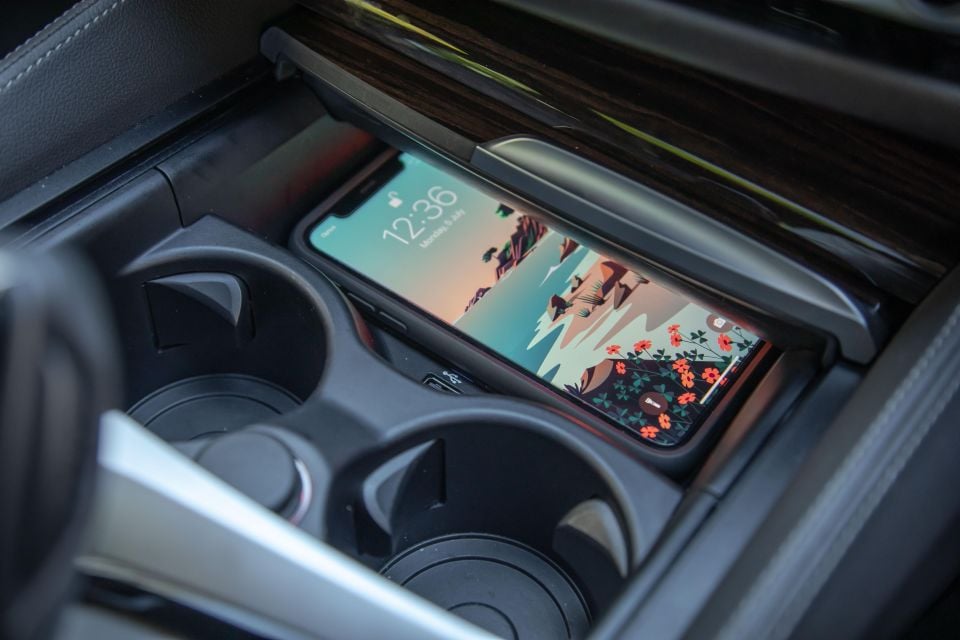
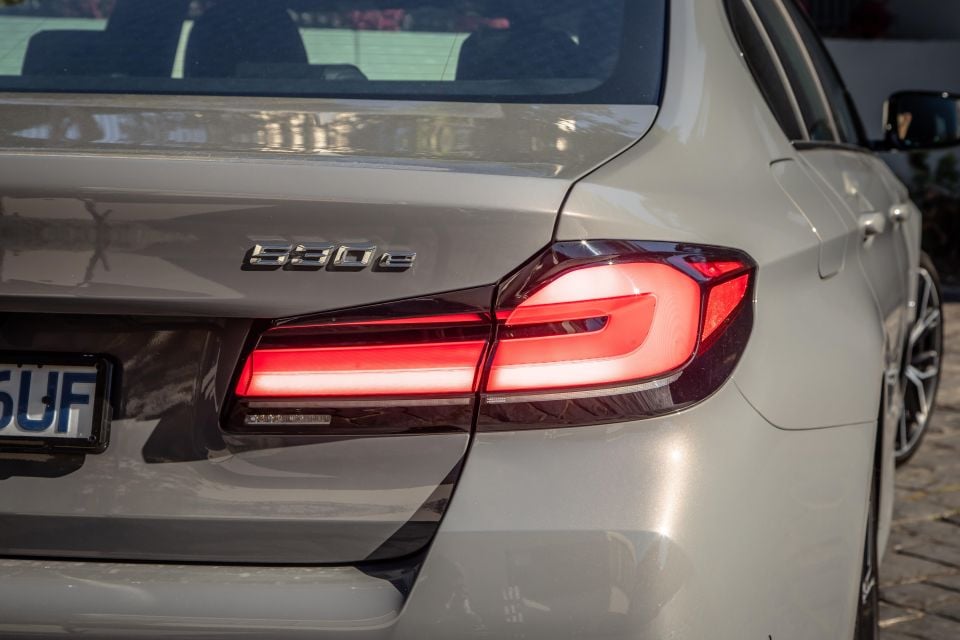
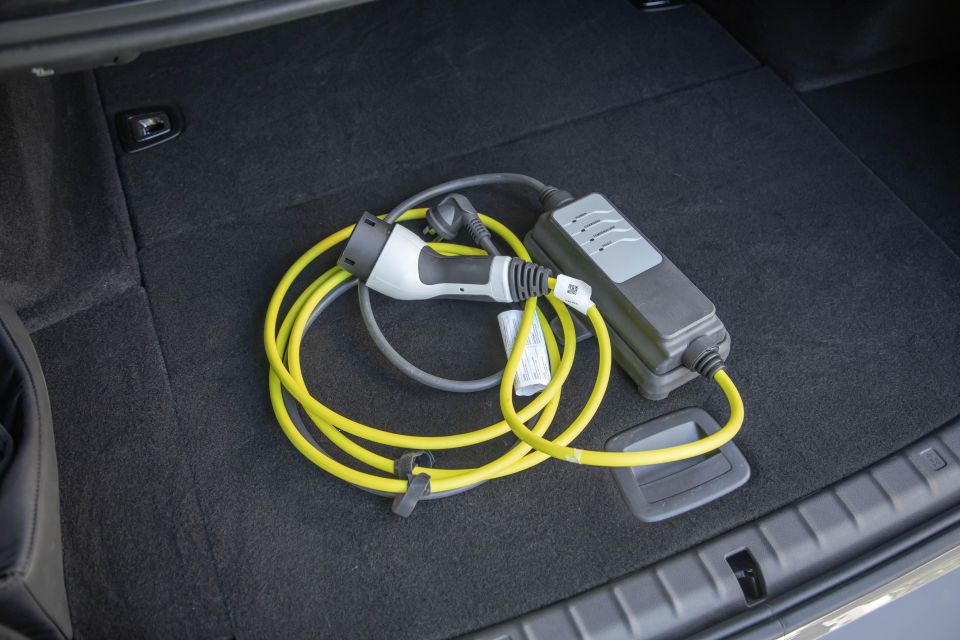
Buy your new car without the stress. It's fast, simple and completely free.

Great service from Travis and team, second time I have used this business would not hesitate to recommend them to anyone
Craig C.
Purchased a Ford Ranger in Sunshine Coast, QLD
CarExpert helped Craig save thousands on his Ford Ranger, now let us save you on your next new car.
Find a dealAs BMW’s staple sport-luxury line-up, the 5 Series gets quite a high level of standard equipment even at 520i entry level.
Even the most basic specification includes M Sport styling, 19-inch wheels, adaptive LED headlights with high-beam assist, wireless Apple CarPlay and Android Auto connectivity, DAB+ radio, ambient lighting, leather-trimmed electric seats with comfort access, a head-up display, 12-speaker sound, BMW Live Cockpit Professional instrumentation, Parking Assistant Plus (360-degree cameras, sensors) and wireless phone charging.
The 530e ups the ante with adaptive M Sport suspension, M Aerodynamics styling, 20-inch wheels with runflat tyres, , sports seating, interior wood trim, 16-speaker Harman/Kardon surround sound, seat heating and electric lumbar adjustment, larger M Sport brakes, and an automatic boot lid.
Specific PHEV tweaks over the non-hybrid versions includes XtraBoost powertrain performance enhancement – as part of the recent facelift update – as well as the associated 1.8kW 5.0-metre-long charging cable hardware, acoustic/sonic warning for pedestrians and eDrive connected services.
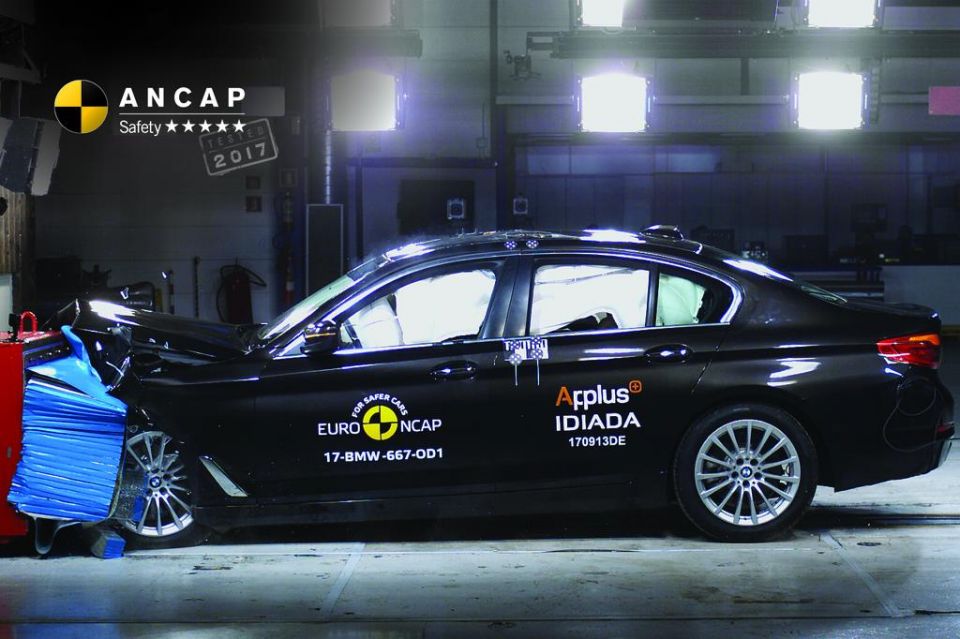
The BMW 5 Series is rated as five stars by ANCAP off assessment conducted by Euro NCAP in 2017.
Thing is, the latter’s report stipulates its own five-star assessment covers “four-cylinder” 5 Series, while the ANCAP’s report only pertains to the 520d diesel specifically.
The scores include 91 per cent for adult occupant protection, 85 per cent of child occupant protection, 81 per cent for pedestrian and a lowly 59 per cent for safety assists, the latter including a score of 0.0 out of 3 for lane support systems.
Worth a big note here is the discrepancy between Euro and Australasian-spec 5 Series at the time of testing – even ANCAP admits in its report on the 5 Series that the zero lane support score does not reflect BMW’s standard Australian specification.
In Oz, the 5 Series fits what BMW markets as its Driving Assistant Professional suite, which includes all-speed autonomous braking with pedestrian detection, lane departure warning, lane-keep assistance, lane changing assist, lane centring as well as blind-spot assist and rear cross traffic assist.
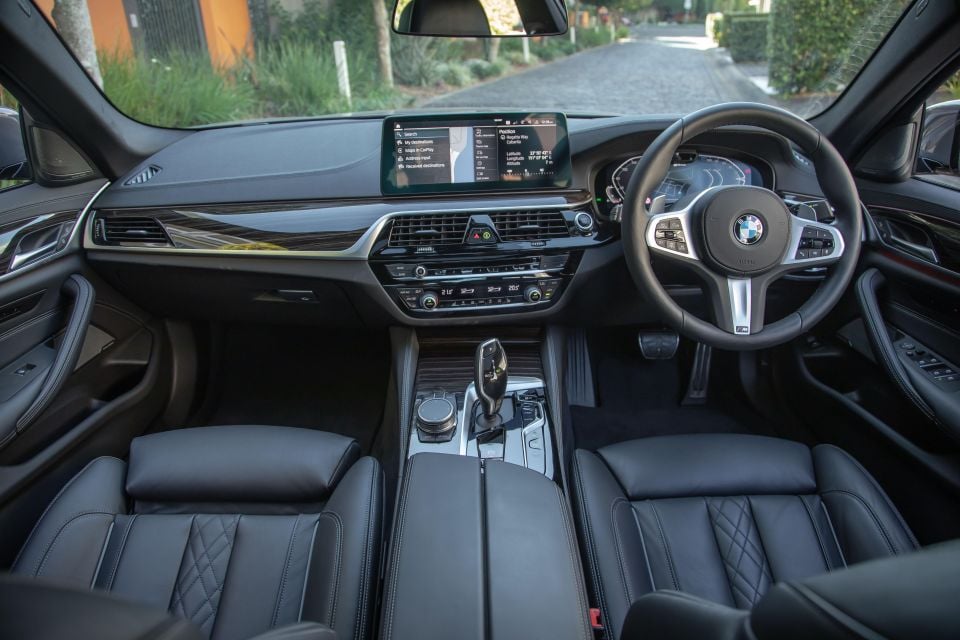
The first thing that hits you when you open the 5 Series’ bank vault-like driver’s door is the smell: there’s a rich and prestigious fragrance to the optional Nappa leather – as best as the source can be tracked – that you simply don’t get with rivals grade trim.
It’s a fine and rewarding introduction to what’s simply an opulent ambience despite the seemingly austere black and woodgrain colour scheme.
Make a cabin feel this rich and sumptuous without heavy handed kitsch or overbearing eye-candy is a real art and the 5er’s execution and integration really is one of BMW’s finest right now. It simply feels more expensive and elaborate than its circa-$120k price point.
Some of the deft execution is clever, such as how the variety of materials dovetail naturally into the designs across the dash fascia and door trims specifically. Some of it is just plain obvious: the only hard plastics I could find are inside the door grab handles, where it needs it, and on the lower B pillar garnish, where you’d expect it. Almost every other surface (bar control areas) is pliant, tactile, soft and welcoming. A no-brainer in prestige fit-out, really.

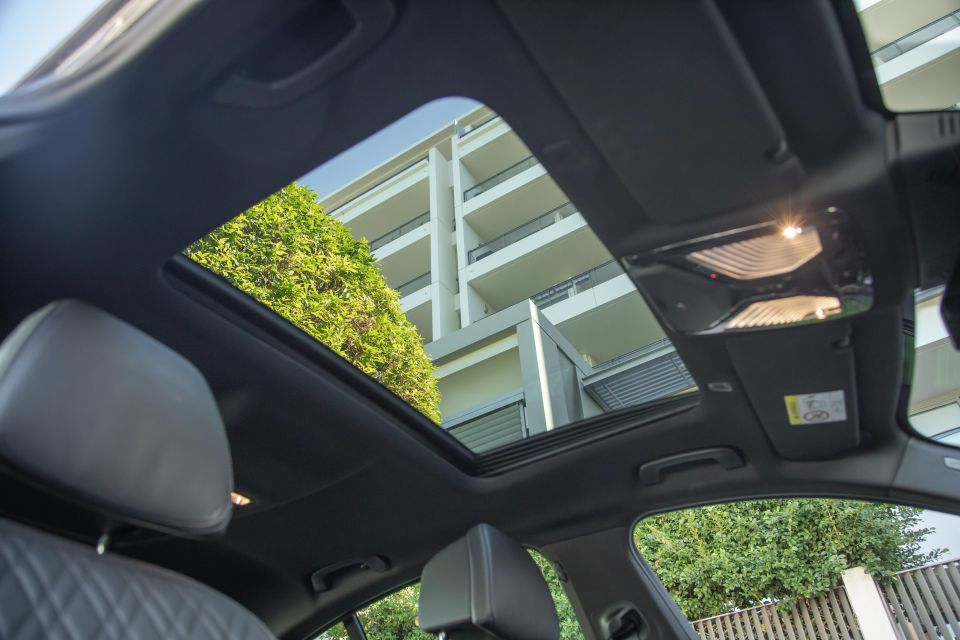
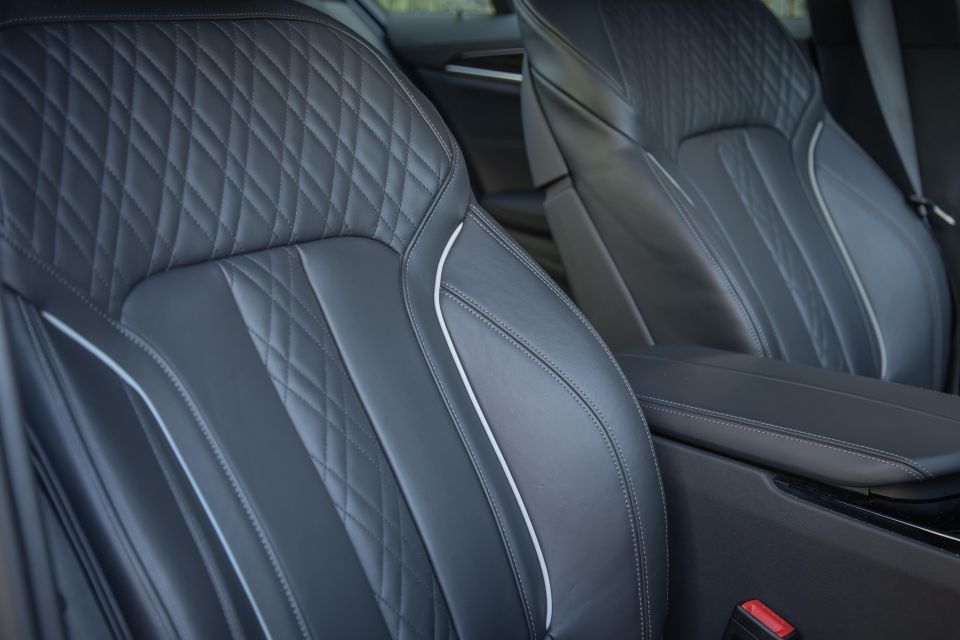
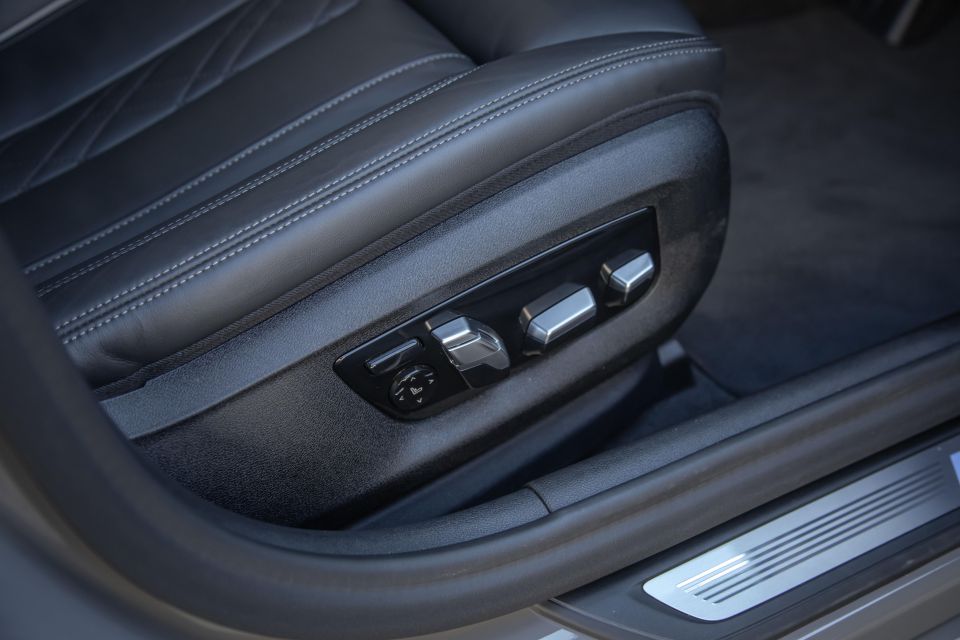
The wheel is typically BMW chunky but the ‘Comfort spec’ seats are really something else: lovingly ornate in their cut, stitching and piping with just a hint of inconsistency to impart proper handmade execution. They’re supremely pliant yet surprisingly supportive – memory foam, perhaps – and the sheer comfort level is seriously impressive.
The 5 Series’ cabin styling is somewhat conventional, in that it’s familiar and quirk-free, if integrating much of the elaborate digital window dressing that’s now par for BMW’s interior course.
You’ll like or loathe the driver’s screen design – I’m personally in the latter camp – which looks lifted from Japanese sci-fi and so confusing to stare at, let alone to glance at, that it might as well be hieroglyphics. It’s a hybrid-specific skin that’s in effect a mess of crescent bars, some seemingly associated with power and regeneration, and mostly useless fodder outside of its speedometer, range and charge/fuel level information.
Thankfully the HVAC controls stick with convention and the infotainment controller hasn’t ‘benefitted’ from an overthought redesign, offering intuitive control of the grand 12.3-inch display screen that also handily doubles as a touch interface, plus silly gesture control that only really useful as a quick party trick.
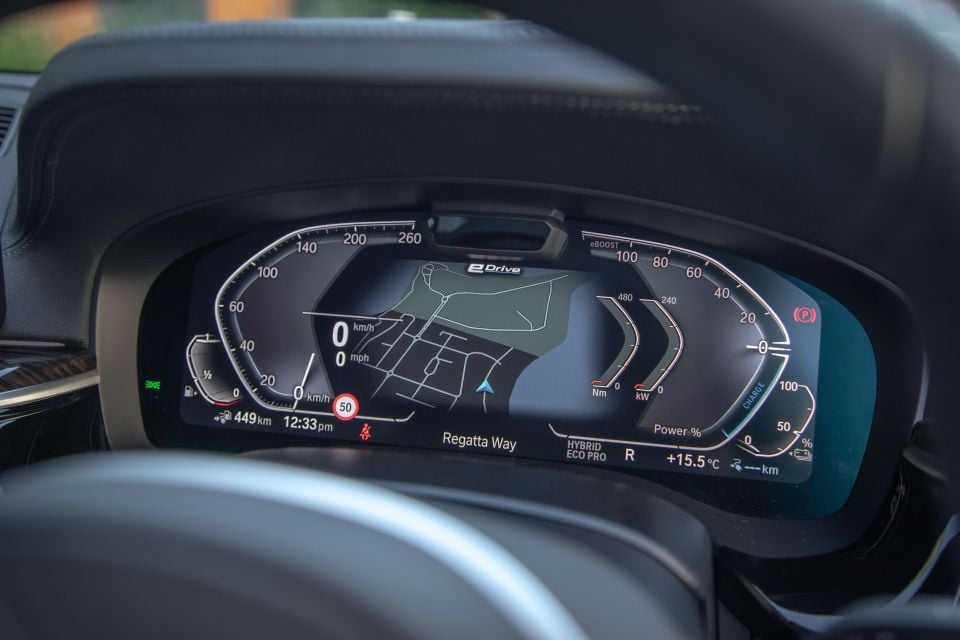
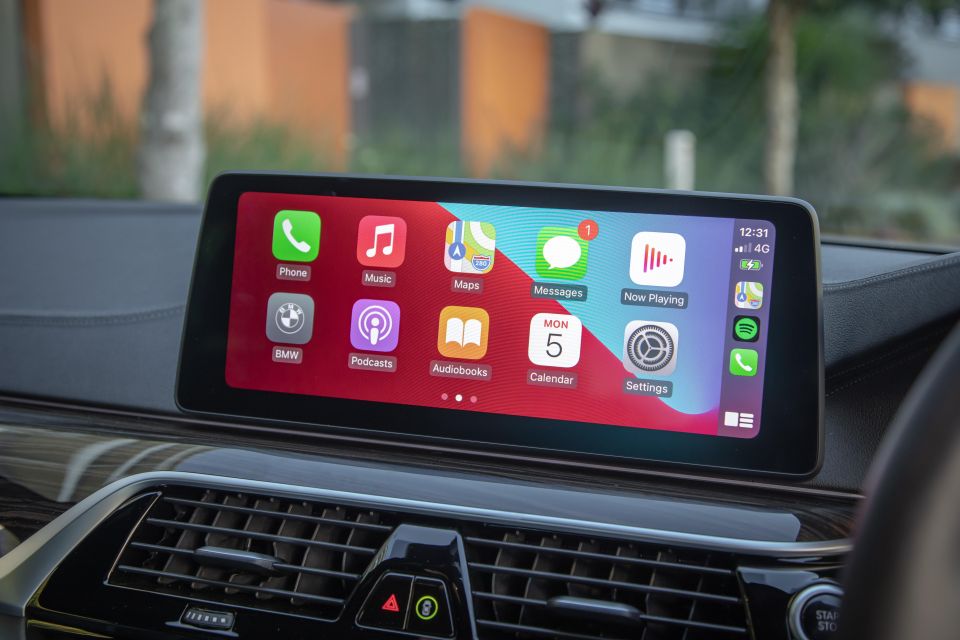
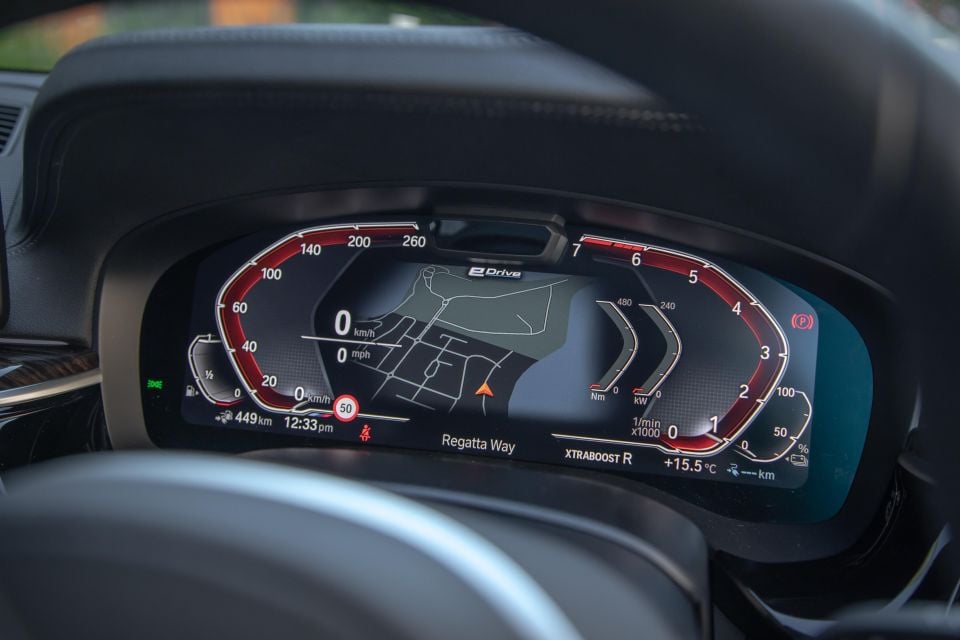

BMW’s Operating System 7.0 seems to have cleaned up and streamlined the user interface to the stuff you need – navigation, audio, streaming – and stuff you might never see cause to using, including the novel if superfluous Experience Modes that give you Executive, Expressive and Wellbeing options, if to what end or benefit is largely unclear without the aid of an internet search.
Connected Package Professional plugs you into BMW’s ecosystem if you so choose, but it’s the aforementioned ‘needs’ that crucially are excellently catered for, with clear guidance, superb sonic quality from the Harman Kardon sound system and faultless wireless CarPlay performance. The 360-degree camera system, with dedicated forward viewing when you need it, is utterly fantastic.
It’s quite the functional cabin space, too, with large door bins, an array of USB-A (one) and USB-C (three) ports covering both seating rows, inductive phone charging and an extended two-zone climate control system that’s effective enough not to warrant a full four-zone application as offered in flagship M550i.
Row two follows through with the upmarket vibe and offers generous shoulder room if moderate knee and headroom.
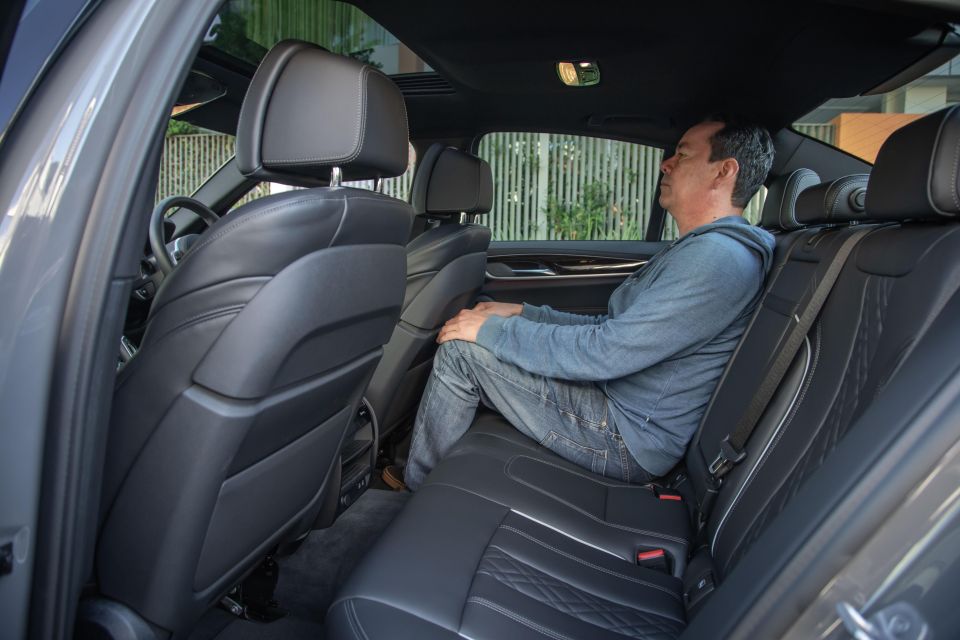
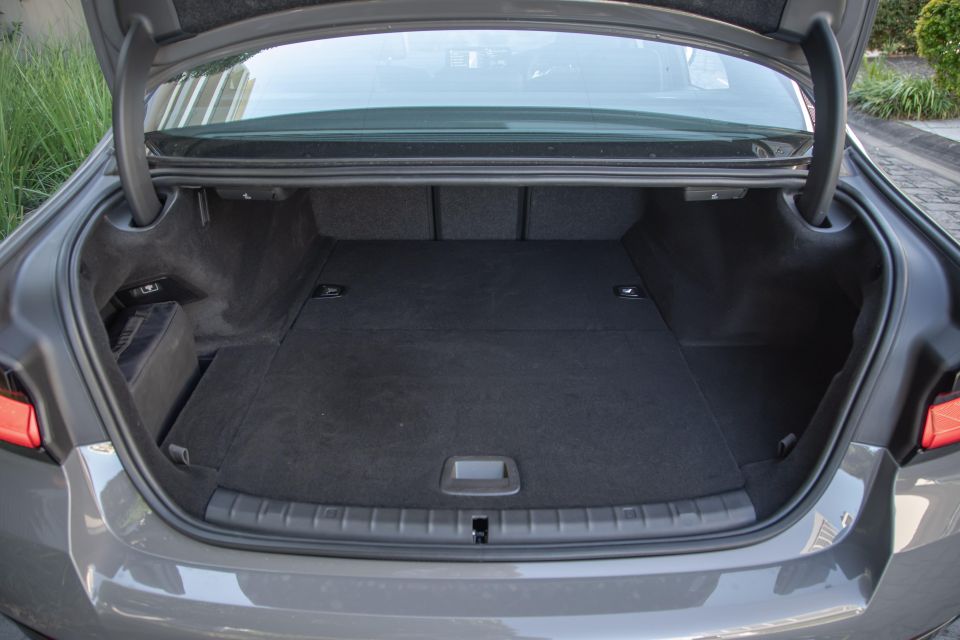
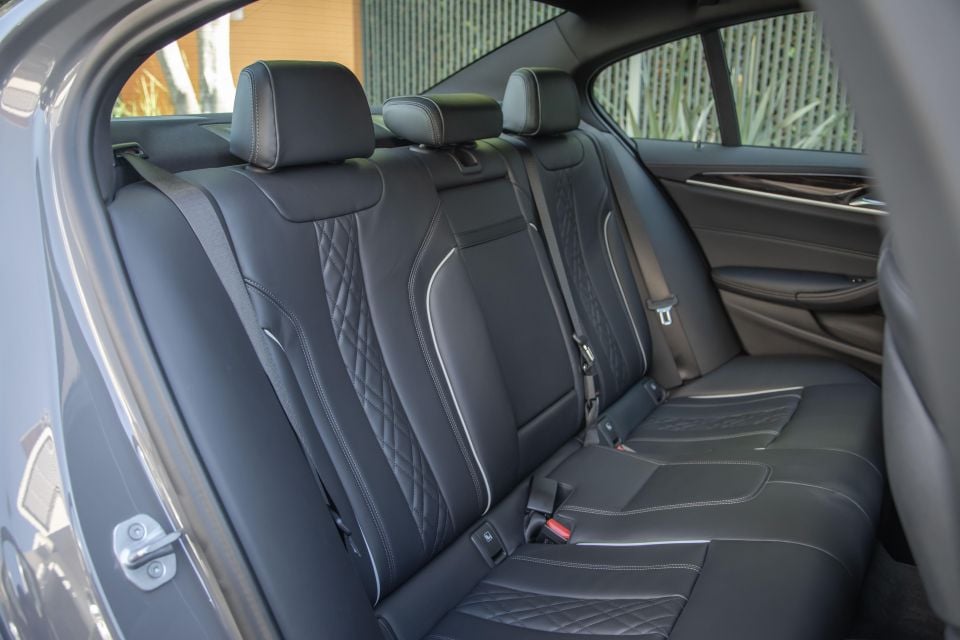
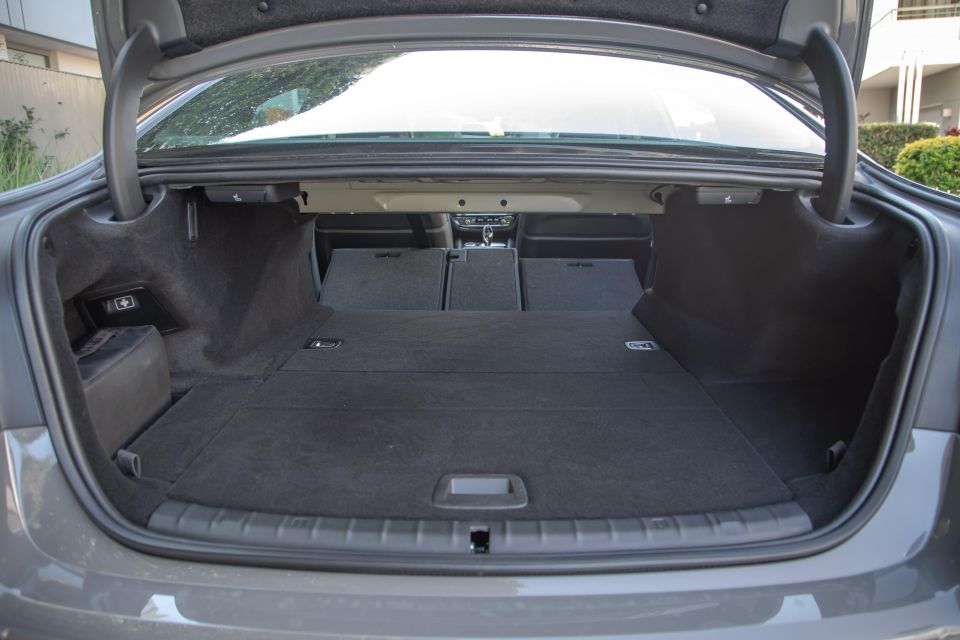
The real bugbear, though, is the quite upright seatback, which does rob a bit of natural ergonomics and long-haul comfort, though the support and quality of the trim work is as satisfying in the rear as it is up front. Rear vents, the aforementioned device ports, a 12V outlet and handy phone tray ensure rear passengers are well catered for.
Bootspace is a modest 410 litres, quite a bit down on the 530L offered across most of the 5 Series range, and all because of packaging for the large hybrid battery pack under the raised floor surface.
The floor does get a nifty dual-plane option, which gives you handy cubby to shove your fast charger kit without laboriously packing in its tight satchel. No spare, though, given the lack of real estate and the fitment of run-flat rubber.
A class act? You bet.

The recently-facelifted 530e gets fitter output and performance credentials than offered in the previous model, which offered 185kW/420Nm of total system outputs and, as a rear-driver as offered in Oz, a 6.1-second 0-100 prospect.
This new version is now rated at 215kW, with torque an unchanged 420Nm, both peak system outputs.
It fits the same 2.0-litre turbocharged four cylinder petrol engine as before producing the same 135kW at 5000rpm and 290Nm at 1350-4250rpm.
But, the synchronous electric motor spec has changed, from 83kW/250Nm in pre-facelift form to 80kW/265Nm in current guise, with an upgrade from a 10.4kWh lithium-ion battery pack to one offering 12.0kWh.
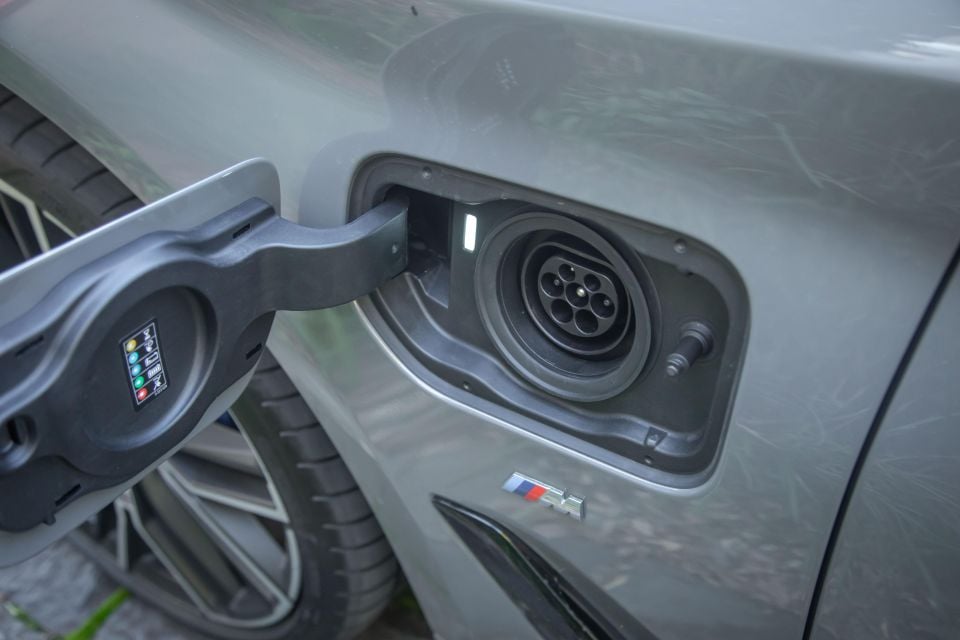
The key performance upshot is XtraBoost, a feature offering an extra 30kW of power – for a 215kW total – in 10-second spurts, or enough of an extra kick up the backside to drop 0-100km/h times from formerly 6.1 seconds to the current 5.9-second (claimed) prowess.
Unsurprisingly, the PHEV version is 0.2sec quicker than the more-affordable (6.1sec) petrol-four 530i offering 185kW/350Nm and suitably 0.2sec slower than the pricier (5.7sec) diesel-six 530d offering 195kW if with a stonking 620Nm on tap.
Relative consumption? According to BMW stats, the 530e’s thrifty 2.3L/100km combined figure is a quantum leap fitter than the 530i’s impressive 6.7L and the 530d’s respectable 5.5L/100km claims.
EV-only maximum range for the 530e is currently advertised as 54 kilometres for Australian spec. Charge time is a best-case scenario of 2.4 hours using AC charging based off performance of the (optionally available) BMW Wallbox.

Despite the M Sport pretensions, right down to the fitment of optional staggered 245mm/275mm 20-inch rolling stock with liquorice-thin Goodyear Eagle F1 run-flat rubber, this 5 Series really just needs to nail one overarching brief for the on-road experience convincingly: it absolutely must be a comfort limousine-like cruiser. And isn’t it ever.
Disclosure: just prior to my time in 530e I spend a long stint in its just-launched arch nemesis, the Mercedes-Benz E350, complete with a similar level of can’t-help-itself AMG sports accoutrement. I don’t need a direct back-to-back comparison between them to deduce that the Bimmer option is utterly superior in what it sets out to demonstrate and achieve on-road when measured as luxury motoring.
A gimmicky series of spaceship like tones greet you at start-up and from thereon in the 530e is, for the most part, so serenely and eerily quiet you imagine its NVH benchmarks were fully-electric rather than other hybrid vehicles. Even when its battery pack seems totally depleted the 5er seems to move from a standstill with electric power, complete with an almost eerie and very subtle synthesised soundtrack outside the car for the benefit of pedestrians.
The lion’s share of the time, particularly on the move, the passing of the baton between electric and petrol drive, or a combination of both, happens quite seamlessly, save for some faint wobble as the (when cold) engine slips into life, usually from a standstill. The petrol four is impressively quiet, its thrum present from outside the car but its operation barely a faint murmur from inside the cabin, which isolates noise from the road and ambient environment with aplomb.
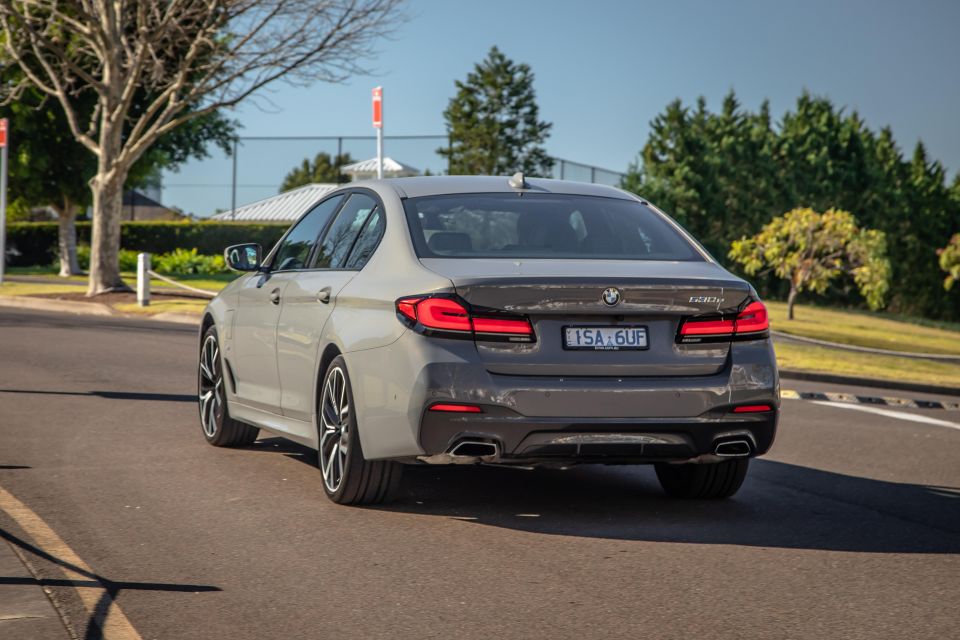
Where expert car reviews meet expert car buying – CarExpert gives you trusted advice, personalised service and real savings on your next new car.
Mode choice is between Electric, Hybrid, Sport and an overarching Adaptive that shuffles modes as it sees fit. With a full charge on board and a somewhat disappointing 31 kilometres of indicated EV range displayed in the driver’s screen, I set off in Hybrid and from thereon, for my maiden hour-long trip across Sydney town and up to 90km/h along motorways, I’d have sworn I was driving a dedicated EV.
The onboard Journey Data telemetry tells another story, the 530e briefly showing 8.0L/100km before settling into lows of between two and three litres per hundred during economy assessment, not far off its 2.3L/100km combined claim.
Running the battery dry – to assess on-the-fly regeneration capabilities and the turbo-four performance sans liberal e-motor assistance – the sedan finally settles into a long-range figure of 3.2L/100km without the benefit and sympathy of constantly plugging in to top-up its battery.
You can personally configure Electric and Sport modes to your whim, the former selecting damping and steering calibration, the latter further adding engine and transmission program changes to personal taste. I really saw no need to meddle at all, because its default Hybrid mode pretty much covers most bases for most driving conditions as one might hope it would.
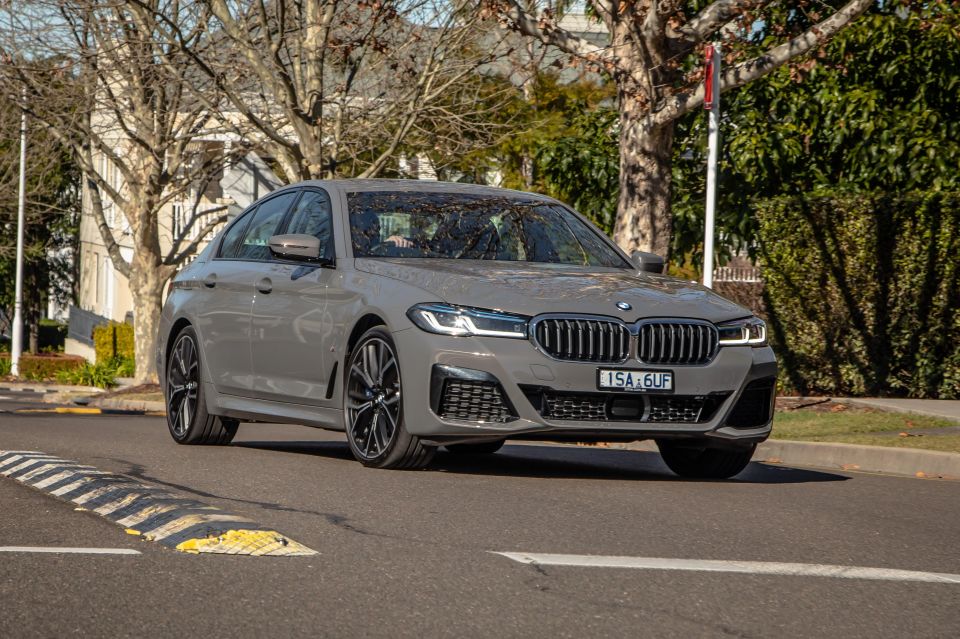
E-drive off the mark – again, almost always the case – is progressive and superbly linear, with no hesitation and ample tractive effort underfoot. Bury your right foot and torque swells instantly, with both power units offering an impressive and seamless ramp-up of thrust with zero fanfare and supreme dignity.
No hiccups, no intrusive sense of power unit shuffling, not even a faint nip from the slick-shifting eight-speed auto. It’s just singular, whisper-quiet acceleration, as hard or as progressive and docile as you’d hoped.
The only slight quirk is braking. The regenerative effect off the throttle and during ‘engine braking’ is slightly pronounced, but it’s really the unusually squishy brake pedal and its vague take-up that demands acclimatisation. Quite strangely, our test car suffered what seemed to be a sticky front-left brake that would pop slightly moving off from a standstill.
The default ride is soft, cushy and borderline wallowy, undoubtedly a byproduct of contending with the hefty M Sport rolling stock and the super-thin front 35- and rear 30-series run-flats that look great but can potentially punish ride comfort. It ought to ride even nicer on its standard-fit 19s.
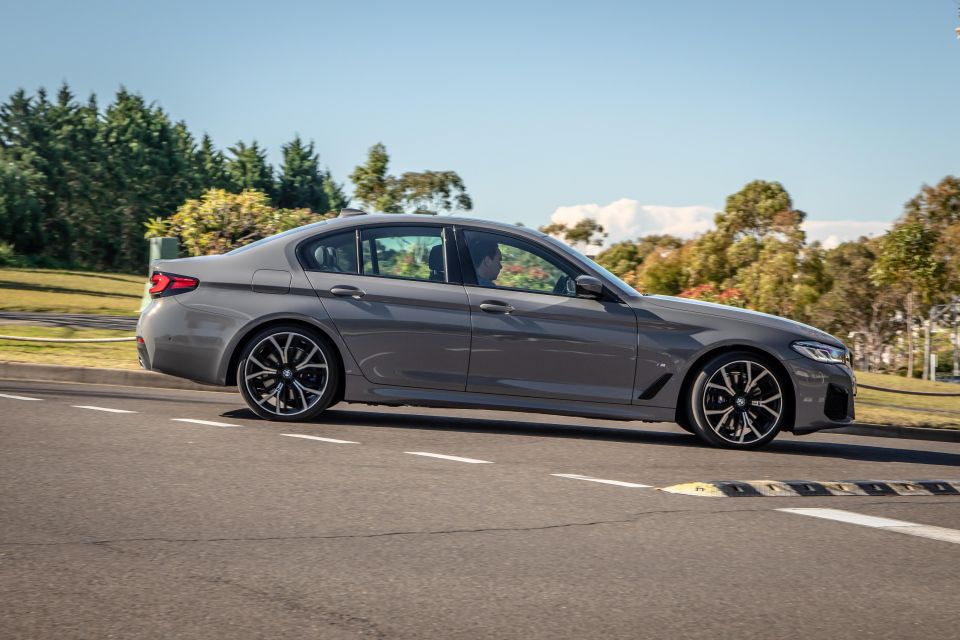
While there’s not much sense of body control or dynamic edge, particularly for what marketed as M Sport Adaptive suspension, the compliance and wheel control across road imperfections small and severe is good, with some evident tyre slap if with almost no noise from the underpinnings even across sharp speed bumps.
It all conspires together to for a genuine limousine experience, whether it’s the stop-start stuff across lumpy inner-city backstreets or stretching its legs on long, smooth motorways, the 530e never seemingly flustered, strained or out of its depth.
And while there are shades of balance and ability in the chassis, there’s little about this large sedan experience that really entices you to allow the red mist to descend or go hunting for a twisty road to wring its neck.
And there’s nothing wrong with that at all. If chasing corners is your bag, there’s an equally as swift, and much more lightweight petrol rear-driven 530i on offer in the BMW stable.
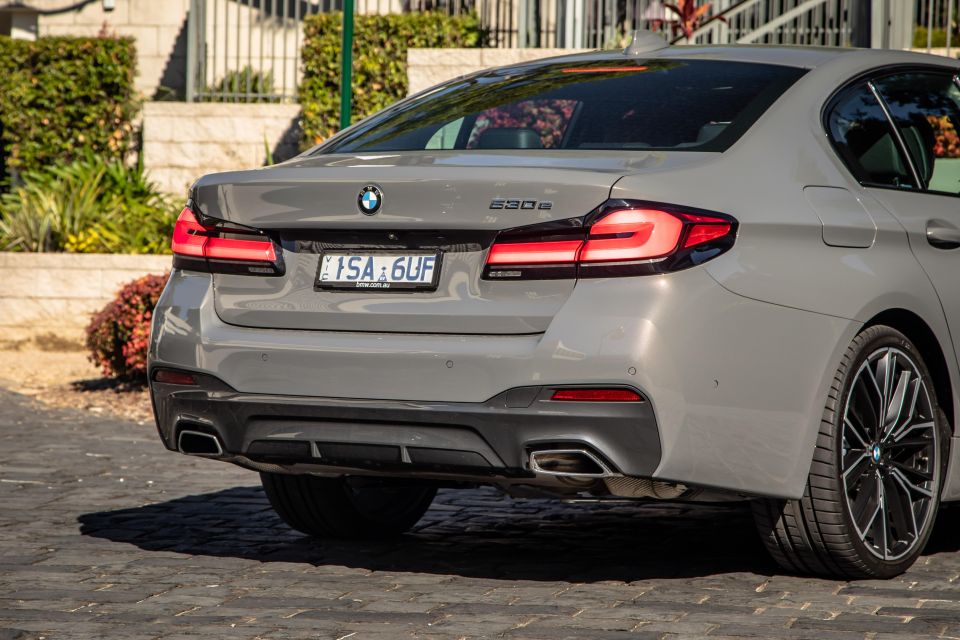
The 5 Series is covered by BMW’s rudimentary and somewhat slim three-year, unlimited-kilometre warranty.
The 530e is no pricier to service than petrol or diesel variants, with its five-year/80,000km packages offering a ‘basic’ tier at $1950 and a more elaborate ‘plus’ tier priced at $5765 that’s inclusive of brake discs/pads, wiper blades, etcetera.
As for fuel, 95 RON premium unleaded is required as a minimum for its 46-litre fuel tank.
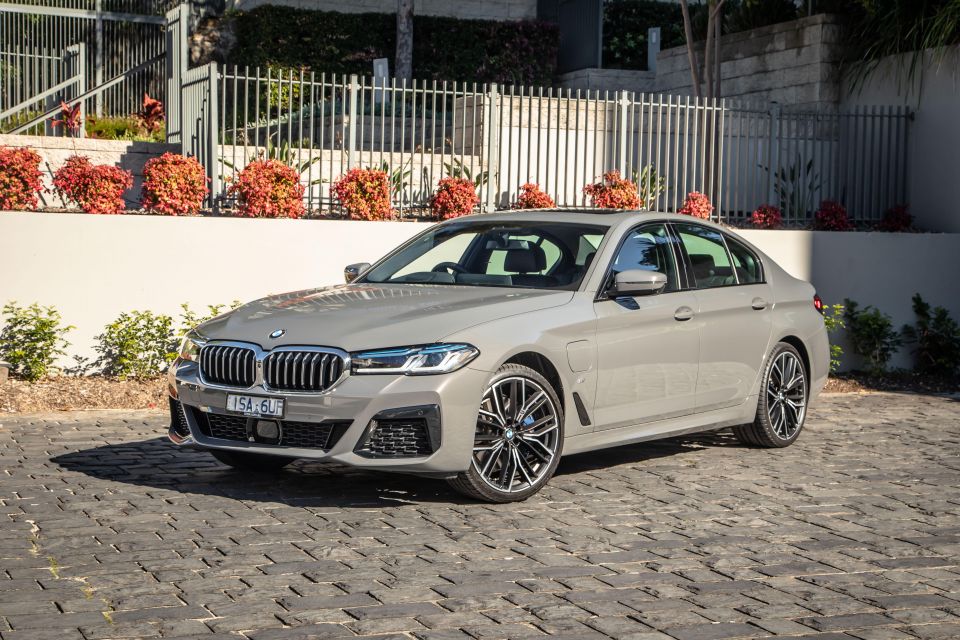
The PHEV spin on BMW’s large four-door is genuinely impressive for one reason above anything else – properly quiet, comfy and luxurious prestige motoring.
It’s the sort of dignified experience the 5 Series nameplate has long hung its reputation from. If that’s at the top of the list of requirements from your prestige German outlay, it nails the brief’s bulls-eye.
It’s not sporty, or at least not nearly as sporty as its styling might suggest, but for certain buyer tastes that’s no foul and, besides, BMW offers more suitably pulse-racing four-doors if that’s your ownership quest.
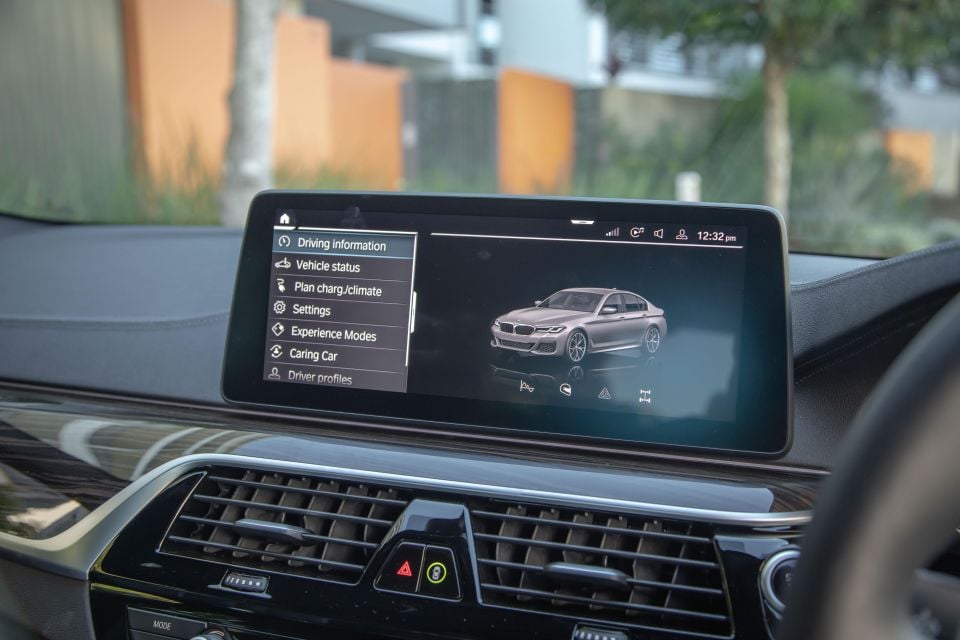
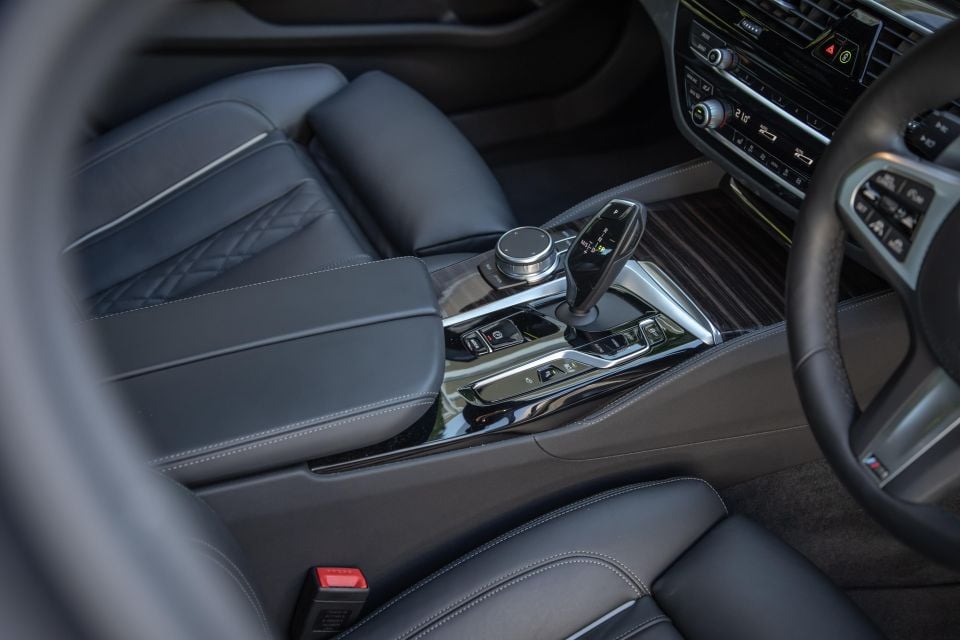
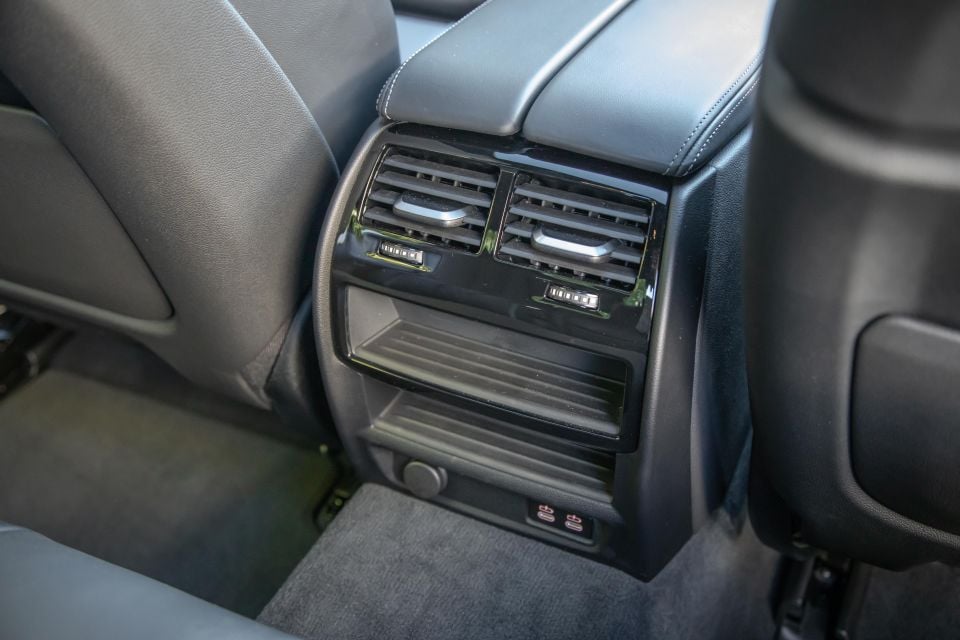
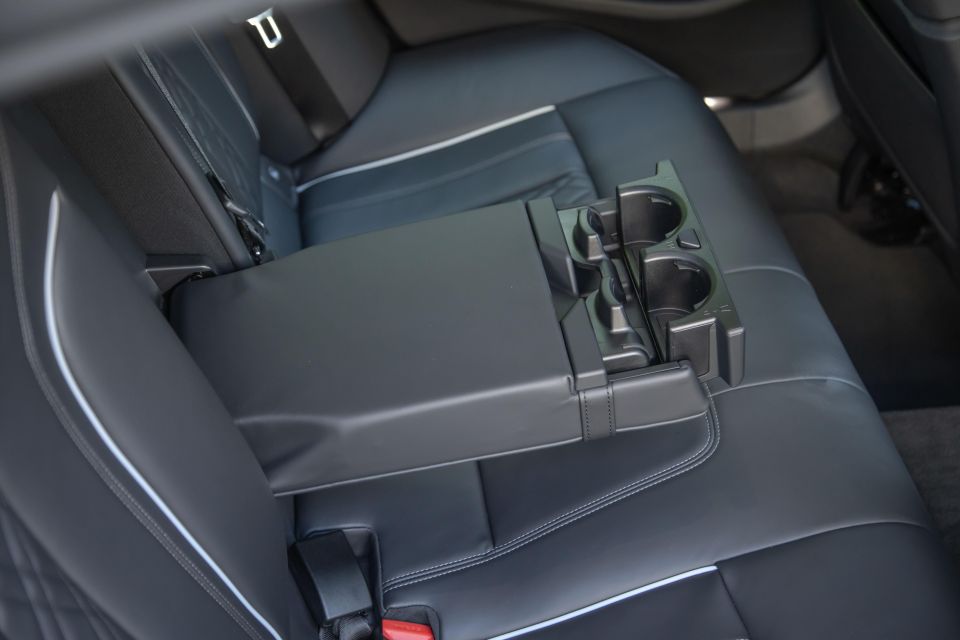
What the 530e does deliver in droves, though, is proper and enjoyable real-world performance that, provided there’s charge in the battery pack, is both polished in manner and satisfying in enthusiasm.
In pure EV mode or power unit-blending hybrid drive modes, it’s a fine thing to drive, be it around town on your regular drive loop or out touring on the open road. This is certainly electrified petrol propulsion done well, without much compromise worth highlighting measured against premium expectations.
The only real markdown of note is the lack of advertised EV range from a full charge, though on balance the 530e’s complex regeneration smarts on the move, deploying electric drive in the most logical and beneficial areas of the driving experience, could well return on its electric range promise in the fullness of the on-road experience.
Sure, the PHEV experience might be more demanding in the user experience than the so-called ‘mild-hybrid’ options out there for similar money from rival marques. But don’t be fooled. BMW’s plug-in format – and those like it on the market – is vastly superior, more satisfying, more beneficial in efficiency and more forward-thinking in almost every way.
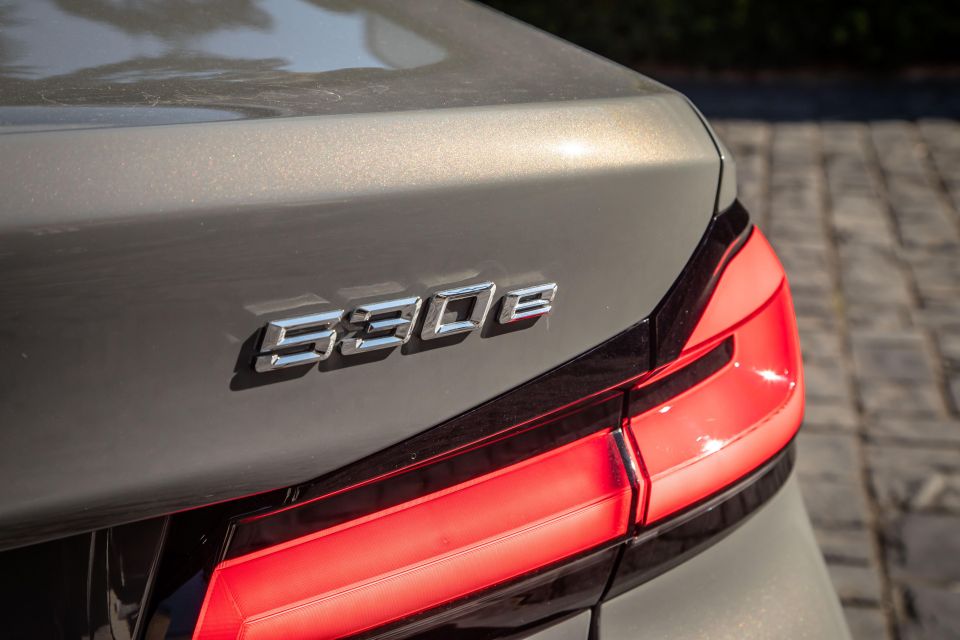
Click the images for the full gallery
MORE: Everything BMW 5 Series
Where expert car reviews meet expert car buying – CarExpert gives you trusted advice, personalised service and real savings on your next new car.


Damion Smy
12 Hours Ago


Damion Smy
4 Days Ago
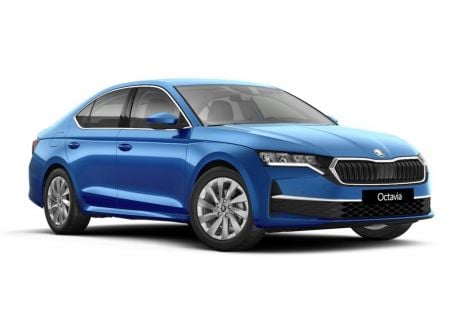

Max Davies
5 Days Ago


Ben Zachariah
7 Days Ago
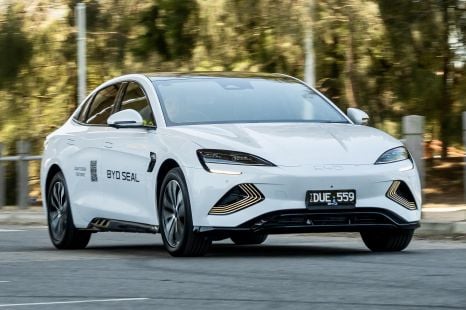

Max Davies
8 Days Ago
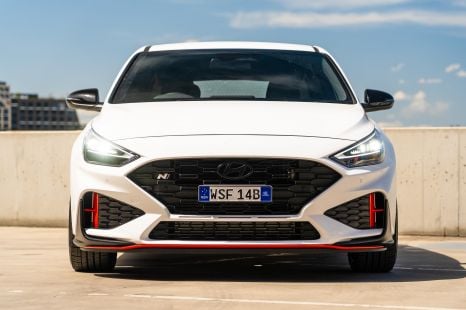

William Stopford
14 Days Ago